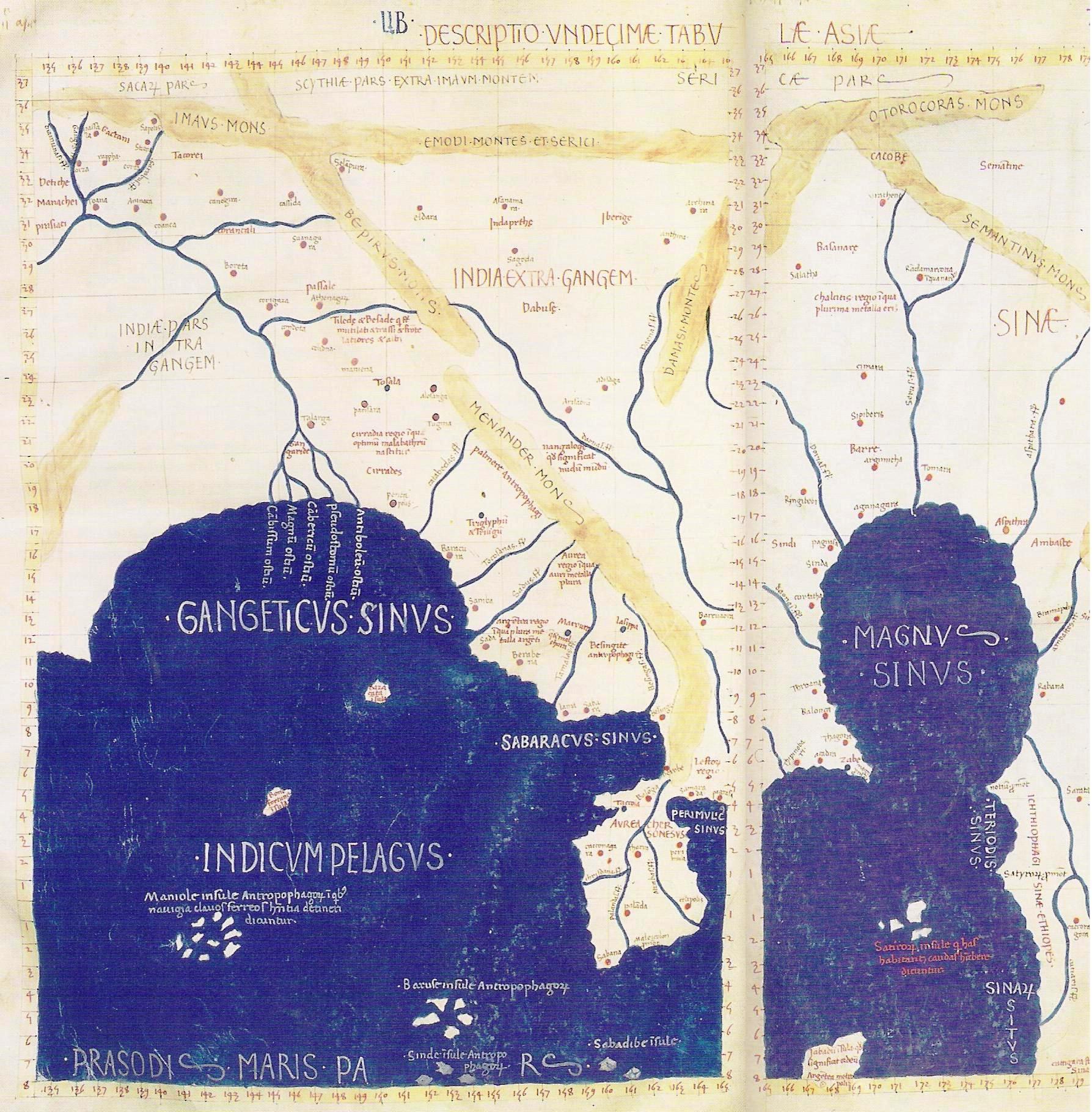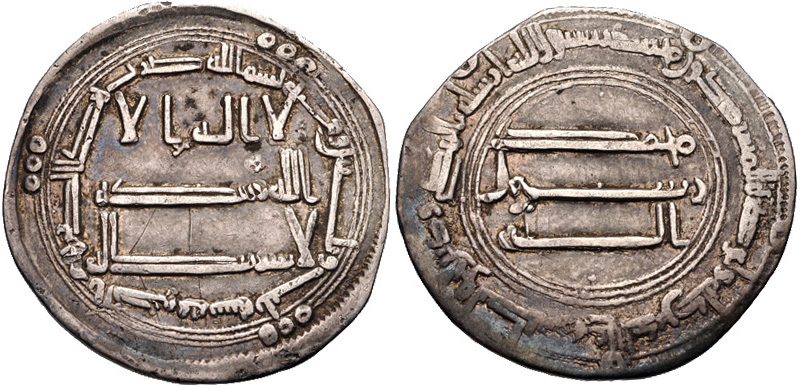|
Magnus Sinus
The Magnus Sinus or Sinus Magnus (Latin; grc-gre, ὀ Μέγας Κόλπος, ''o Mégas Kólpos''), also anglicized as the was the form of the Gulf of Thailand and South China Sea known to Greek, Roman, Arab, Persian, and Renaissance cartographers before the Age of Discovery. It was then briefly conflated with the Pacific Ocean before disappearing from maps. History The gulf and its major port of Cattigara had supposedly been reached by a 1st-century Greek trader named Alexander, who returned safely and left a periplus of his voyage. His account that Cattigara was "some days" sail from Zaba was taken by Marinus of Tyre to mean "numberless" days and by Ptolemy to mean "a few". Both Alexander and Marinus's works have been lost, but were claimed as authorities by Ptolemy in his ''Geography''. Ptolemy (and presumably Marinus before him) followed Hipparchus in making the Indian Ocean a landlocked sea, placing Cattigara on its unknown eastern shoreline. The expanse forme ... [...More Info...] [...Related Items...] OR: [Wikipedia] [Google] [Baidu] |
Ptolemy Asia Detail
Claudius Ptolemy (; grc-gre, Πτολεμαῖος, ; la, Claudius Ptolemaeus; AD) was a mathematician, astronomer, astrologer, geographer, and music theorist, who wrote about a dozen scientific treatises, three of which were of importance to later Byzantine, Islamic, and Western European science. The first is the astronomical treatise now known as the ''Almagest'', although it was originally entitled the ''Mathēmatikē Syntaxis'' or ''Mathematical Treatise'', and later known as ''The Greatest Treatise''. The second is the ''Geography'', which is a thorough discussion on maps and the geographic knowledge of the Greco-Roman world. The third is the astrological treatise in which he attempted to adapt horoscopic astrology to the Aristotelian natural philosophy of his day. This is sometimes known as the ''Apotelesmatika'' (lit. "On the Effects") but more commonly known as the '' Tetrábiblos'', from the Koine Greek meaning "Four Books", or by its Latin equivalent ''Quadripart ... [...More Info...] [...Related Items...] OR: [Wikipedia] [Google] [Baidu] |
Tyre (city)
Tyre (; ar, صور, translit=Ṣūr; phn, 𐤑𐤓, translit=Ṣūr, Greek ''Tyros'', Τύρος) is a city in Lebanon, one of the oldest continually inhabited cities in the world, though in medieval times for some centuries by just a tiny population. It was one of the earliest Phoenician metropolises and the legendary birthplace of Europa, her brothers Cadmus and Phoenix, as well as Carthage's founder Dido (Elissa). The city has many ancient sites, including the Tyre Hippodrome, and was added as a whole to UNESCO's list of World Heritage Sites in 1984. The historian Ernest Renan noted that "One can call Tyre a city of ruins, built out of ruins". Today Tyre is the fourth largest city in Lebanon after Beirut, Tripoli, and Sidon. It is the capital of the Tyre District in the South Governorate. There were approximately 200,000 inhabitants in the Tyre urban area in 2016, including many refugees, as the city hosts three of the twelve Palestinian refugee camps in Lebanon: Burj E ... [...More Info...] [...Related Items...] OR: [Wikipedia] [Google] [Baidu] |
Soleiman The Merchant ''
{{dab, geo ...
Soleyman ( fa, سليمان) may refer to: *Soleyman II, Persian ruler *Soleyman Binafard (b. 1933), Iranian sport wrestler *Soleyman, Khuzestan, a village in Khuzestan Province, Iran *Soleyman, South Khorasan, a village in South Khorasan Province, Iran *Soleyman District, an administrative subdivision of Razavi Khorasan Province, Iran *Soleyman Rural District, an administrative subdivision of Razavi Khorasan Province, Iran See also *Sulaiman (other) *Solomon (other) *''King Soloman King is the title given to a male monarch in a variety of contexts. The female equivalent is queen, which title is also given to the consort of a king. *In the context of prehistory, antiquity and contemporary indigenous peoples, the tit ... [...More Info...] [...Related Items...] OR: [Wikipedia] [Google] [Baidu] |
Al-Maʿmūn
Abu al-Abbas Abdallah ibn Harun al-Rashid ( ar, أبو العباس عبد الله بن هارون الرشيد, Abū al-ʿAbbās ʿAbd Allāh ibn Hārūn ar-Rashīd; 14 September 786 – 9 August 833), better known by his regnal name Al-Ma'mun ( ar, المأمون, al-Maʾmūn), was the seventh Abbasid caliph, who reigned from 813 until his death in 833. He succeeded his half-brother al-Amin after a civil war, during which the cohesion of the Abbasid Caliphate was weakened by rebellions and the rise of local strongmen; much of his domestic reign was consumed in pacification campaigns. Well educated and with a considerable interest in scholarship, al-Ma'mun promoted the Translation Movement, the flowering of learning and the sciences in Baghdad, and the publishing of al-Khwarizmi's book now known as "Algebra". He is also known for supporting the doctrine of Mu'tazilism and for imprisoning Imam Ahmad ibn Hanbal, the rise of religious persecution (''mihna''), and for ... [...More Info...] [...Related Items...] OR: [Wikipedia] [Google] [Baidu] |
Al-Khwārizmī
Muḥammad ibn Mūsā al-Khwārizmī ( ar, محمد بن موسى الخوارزمي, Muḥammad ibn Musā al-Khwārazmi; ), or al-Khwarizmi, was a Persians, Persian polymath from Khwarazm, who produced vastly influential works in Mathematics in medieval Islam, mathematics, Astronomy in the medieval Islamic world, astronomy, and Geography and cartography in medieval Islam, geography. Around 820 CE, he was appointed as the astronomer and head of the library of the House of Wisdom in Baghdad.Maher, P. (1998), "From Al-Jabr to Algebra", ''Mathematics in School'', 27(4), 14–15. Al-Khwarizmi's popularizing treatise on algebra (''The Compendious Book on Calculation by Completion and Balancing'', c. 813–833 CEOaks, J. (2009), "Polynomials and Equations in Arabic Algebra", ''Archive for History of Exact Sciences'', 63(2), 169–203.) presented the first systematic solution of linear equation, linear and quadratic equations. One of his principal achievements in algebra was his demon ... [...More Info...] [...Related Items...] OR: [Wikipedia] [Google] [Baidu] |
Arabic Language
Arabic (, ' ; , ' or ) is a Semitic languages, Semitic language spoken primarily across the Arab world.Semitic languages: an international handbook / edited by Stefan Weninger; in collaboration with Geoffrey Khan, Michael P. Streck, Janet C. E.Watson; Walter de Gruyter GmbH & Co. KG, Berlin/Boston, 2011. Having emerged in the 1st century, it is named after the Arabs, Arab people; the term "Arab" was initially used to describe those living in the Arabian Peninsula, as perceived by geographers from ancient Greece. Since the 7th century, Arabic has been characterized by diglossia, with an opposition between a standard Prestige (sociolinguistics), prestige language—i.e., Literary Arabic: Modern Standard Arabic (MSA) or Classical Arabic—and diverse vernacular varieties, which serve as First language, mother tongues. Colloquial dialects vary significantly from MSA, impeding mutual intelligibility. MSA is only acquired through formal education and is not spoken natively. It is ... [...More Info...] [...Related Items...] OR: [Wikipedia] [Google] [Baidu] |
NFCC
The PFF National Challenge Cup is an annual semi-professional knockout football competition in men's domestic Pakistani football within the Pakistan football league system. It is organized by and named after the Pakistan Football Federation. Khan Research Laboratories have won the most titles (six). WAPDA are the current champions, winning the 2020 edition courtesy of a 1-0 win against SSGC F.C. in the final. Background Although it is an annual competition, it has not been held on a few occasions. The competition was not held from (1980–83, 1986, 1988–89, 1995, 1997, 2004, 2006–07, 2017, 2021–22). The tournament has seen various name changes throughout its establishment. Names Finals ;Wins by club Results by team Since its establishment, the National Challenge Cup has been won by 15 different teams. Teams shown in ''italics'' are no longer in existence. Giant killings The possibility of unlikely victories in the earlier rounds of the competition, where lower ... [...More Info...] [...Related Items...] OR: [Wikipedia] [Google] [Baidu] |
Malay Peninsula
The Malay Peninsula ( Malay: ''Semenanjung Tanah Melayu'') is a peninsula in Mainland Southeast Asia. The landmass runs approximately north–south, and at its terminus, it is the southernmost point of the Asian continental mainland. The area contains Peninsular Malaysia, Southern Thailand, and the southernmost tip of Myanmar (Kawthaung). The island country of Singapore also has historical and cultural ties with the region. The indigenous people of the peninsula are the Malays, an Austronesian people. The Titiwangsa Mountains are part of the Tenasserim Hills system and form the backbone of the peninsula and the southernmost section of the central cordillera, which runs from Tibet through the Kra Isthmus, the peninsula's narrowest point, into the Malay Peninsula. The Strait of Malacca separates the Malay Peninsula from the Indonesian island of Sumatra, and the south coast is separated from the island of Singapore by the Straits of Johor. Etymology The Malay term ... [...More Info...] [...Related Items...] OR: [Wikipedia] [Google] [Baidu] |
Terra Incognita
''Terra incognita'' or ''terra ignota'' (Latin "unknown land"; ''incognita'' is stressed on its second syllable in Latin, but with variation in pronunciation in English) is a term used in cartography for regions that have not been mapped or documented. The expression is believed to be first seen in Ptolemy's ''Geography'' c. 150. The term was reintroduced in the 15th century from the rediscovery of Ptolemy's work during the Age of Discovery. The equivalent on French maps would be ''terres inconnues'' (plural form), and some English maps may show ''Parts Unknown''. Similarly, uncharted or unknown seas would be labeled ''mare incognitum'', Latin for "unknown sea". Details An urban legend claims that cartographers labelled such regions with " Here be dragons". Although cartographers did claim that fantastic beasts (including large serpents) existed in remote corners of the world and depicted such as decoration on their maps, only one known surviving map, the Hunt–Lenox ... [...More Info...] [...Related Items...] OR: [Wikipedia] [Google] [Baidu] |
Indian Ocean
The Indian Ocean is the third-largest of the world's five oceanic divisions, covering or ~19.8% of the water on Earth's surface. It is bounded by Asia to the north, Africa to the west and Australia to the east. To the south it is bounded by the Southern Ocean or Antarctica, depending on the definition in use. Along its core, the Indian Ocean has some large marginal or regional seas such as the Arabian Sea, Laccadive Sea, Bay of Bengal, and Andaman Sea. Etymology The Indian Ocean has been known by its present name since at least 1515 when the Latin form ''Oceanus Orientalis Indicus'' ("Indian Eastern Ocean") is attested, named after India, which projects into it. It was earlier known as the ''Eastern Ocean'', a term that was still in use during the mid-18th century (see map), as opposed to the ''Western Ocean'' ( Atlantic) before the Pacific was surmised. Conversely, Chinese explorers in the Indian Ocean during the 15th century called it the Western Oceans. In Anci ... [...More Info...] [...Related Items...] OR: [Wikipedia] [Google] [Baidu] |
Hipparchus
Hipparchus (; el, Ἵππαρχος, ''Hipparkhos''; BC) was a Greek astronomer, geographer, and mathematician. He is considered the founder of trigonometry, but is most famous for his incidental discovery of the precession of the equinoxes. Hipparchus was born in Nicaea, Bithynia, and probably died on the island of Rhodes, Greece. He is known to have been a working astronomer between 162 and 127 BC. Hipparchus is considered the greatest ancient astronomical observer and, by some, the greatest overall astronomer of antiquity. He was the first whose quantitative and accurate models for the motion of the Sun and Moon survive. For this he certainly made use of the observations and perhaps the mathematical techniques accumulated over centuries by the Babylonians and by Meton of Athens (fifth century BC), Timocharis, Aristyllus, Aristarchus of Samos, and Eratosthenes, among others. He developed trigonometry and constructed trigonometric tables, and he solved sev ... [...More Info...] [...Related Items...] OR: [Wikipedia] [Google] [Baidu] |






